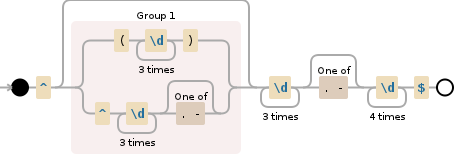It does look redundant, but there is one possible explanation for it that would be valid (albeit non-sensical given the context).
You've only included the regex pattern in the question; what you haven't shown us is whether any modifiers are being used.
If you use the m modifier to switch the regex parser into multi-line mode, then the ^ and $ anchors change their meaning so that they match the start and end of a line, as well as of the entire string.
Therefore, if your expression was using the m modifier, the additional ^ would tell it to look for an extra line-feed in that particular instance. So it would have an effect on the expression.
But ultimately, looking at what the expression you quoted actually does, I doubt that this is what is intended; it does look as if it's basically a mistake, as you assume.

